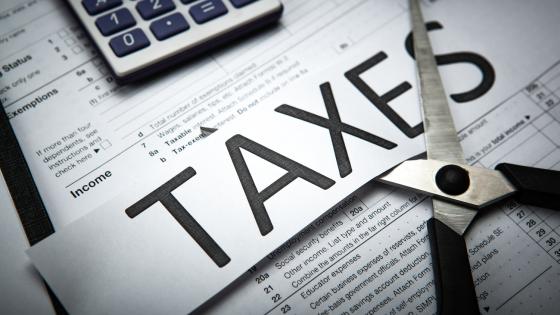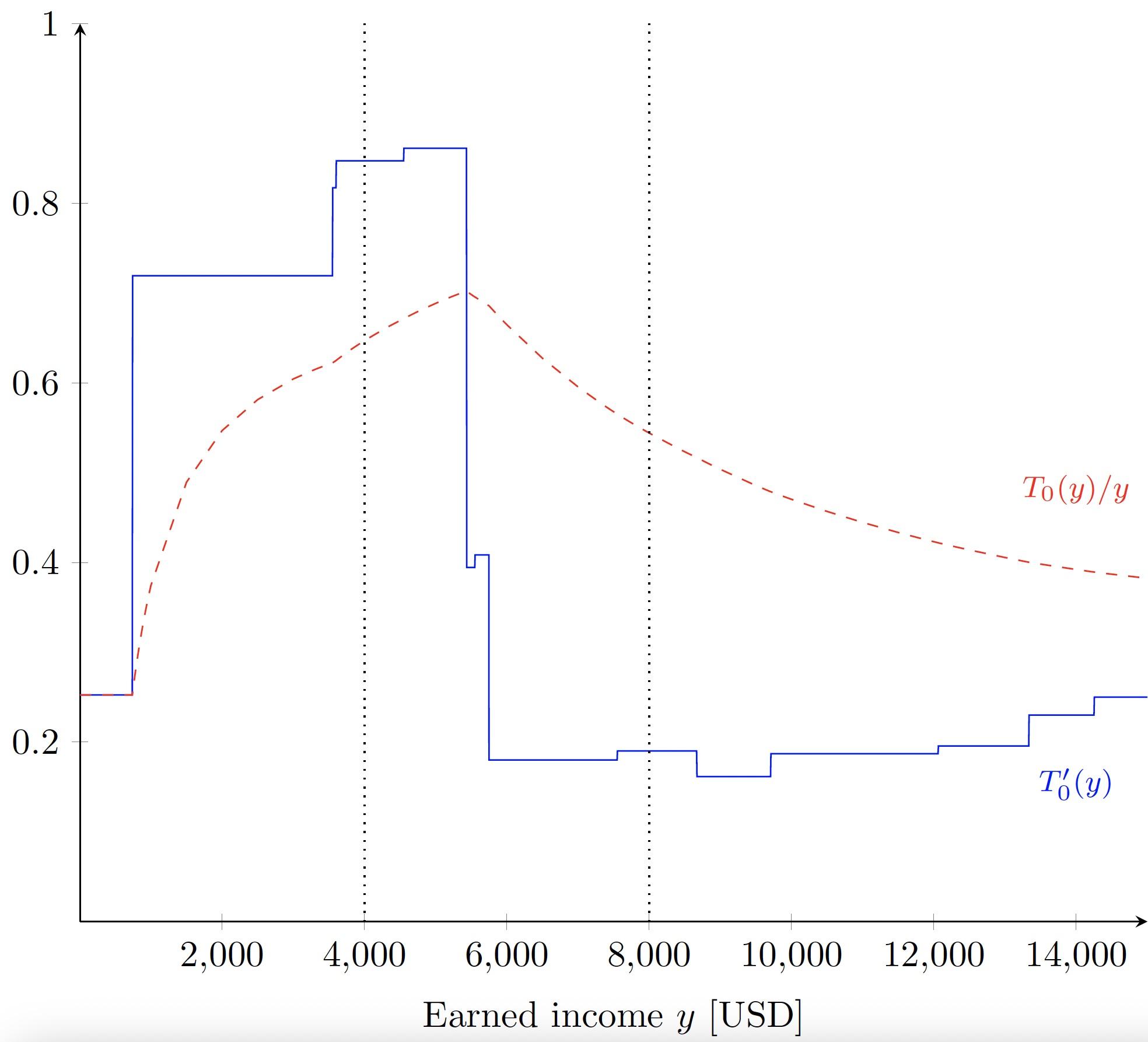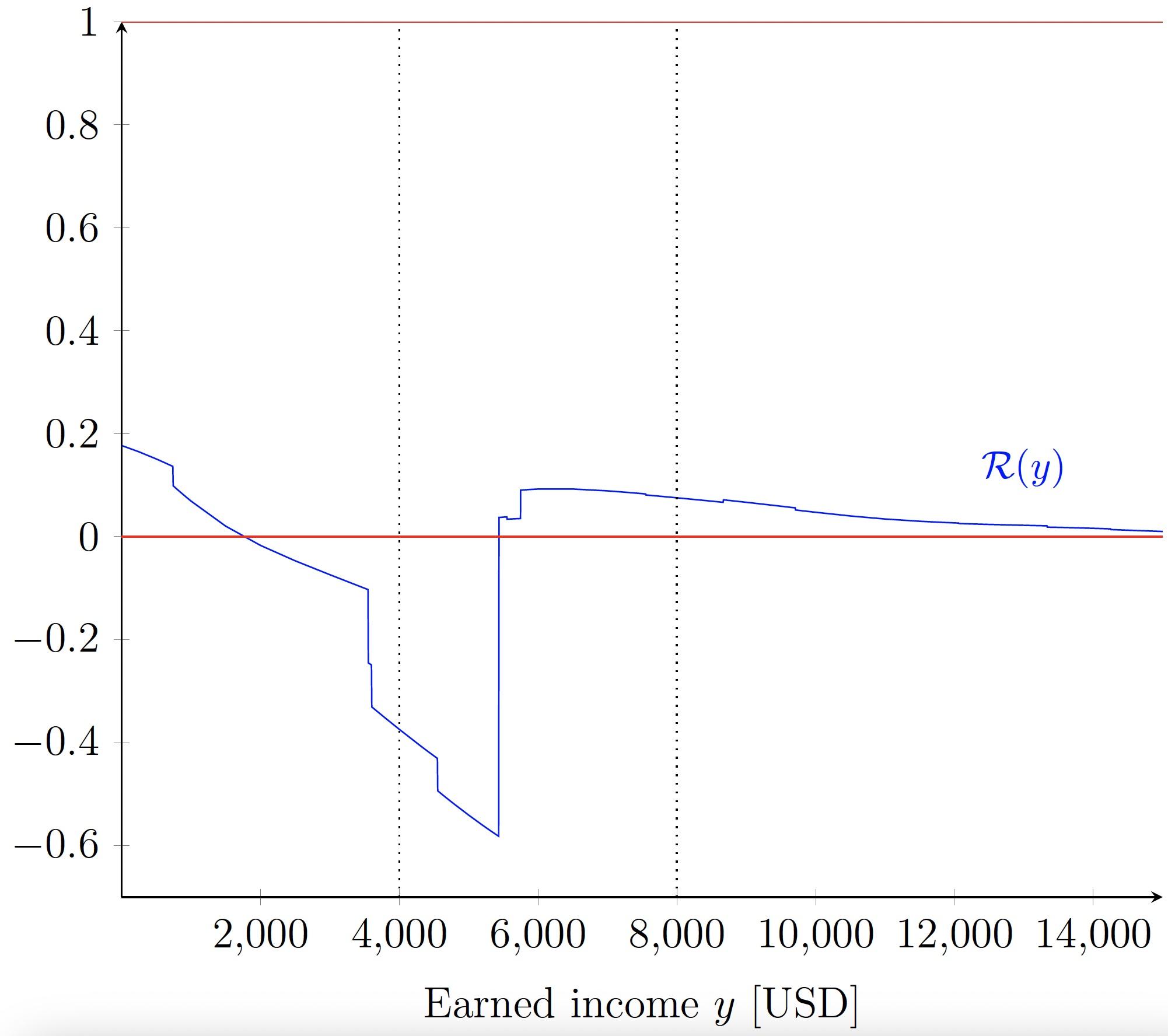Reforms of the tax-and-transfer system are intensely debated in the run-up to elections in democratic countries and often matter for electoral outcomes (Bierbrauer et al. 2020). In the political sphere and in the media, such debates are typically phrased in terms of who wins and who loses: For example, the presidential candidate from a left-wing party may propose to increase the top tax rate in order to redistribute from high- to low-income individuals. Public economists refer to such arguments in terms of the famous equity-efficiency trade-off: The reform in question can reduce income inequality at the expense of creating distortions in labour supply (Mirrlees 1971, Frankel 2014, Diamond 1998, Blundell and Preston 2019). Such debates are based on the presumption that it is impossible to design reforms that make everybody better off. Self-financing tax cuts are too good to be true; they are fantastic.
But what if this presumption is wrong? The literature on Pareto-efficient income taxation (Stiglitz 1982, Werning 2007, Lorenz and Sachs 2016) investigates conditions under which self-financing tax cuts do exist. The idea goes back to the Laffer curve:
If tax rates are above some threshold (the Laffer rate), then their reduction may allow increasing tax revenue. In particular, taxpayers may then increase their labour supply so much that the implied revenue gains compensate the initial (mechanical) revenue loss from the tax cut in question. This idea is straightforward if there is a single tax rate (say, the top tax rate as in Saez 2001). But with the non-linear tax-and-transfer systems in place in modern countries, there are plenty of tax rates in different income brackets and from a variety of programmes (e.g. welfare transfers, in-work benefits, income and payroll taxes). How can we know whether it is possible to reduce some of them, or reduce some and increase others, to indeed make everyone better off?
A theory of Pareto-improving tax reforms
In a recent paper (Bierbrauer et al. 2023), we make progress on this question and show that self-financing tax cuts exist more often than one might think. We first derive the following conceptual insights:
- Suppose that, in your country, there is no Laffer-type reform that allows increasing tax revenue by reducing the (marginal) tax rate in a single income bracket. Can there be a reform that changes tax rates in two brackets and makes everyone better off? The answer is ‘yes’. There can be self-financing tax cuts with a phase-in range where tax rates are reduced and a phase-out range where tax rates are increased. Such reforms reduce the tax burden for people between these two brackets and do not increase the tax burden for anyone else. The introduction of the Earned Income Tax Credit (EITC) in the US in the mid-1970s – a system of earnings subsidies for low-income households – is an empirical example of a reform with these properties.
- Suppose that, in your country, there is no self-financing tax cut with two brackets. Can there be a reform that changes tax rates in three or more brackets and makes everyone better off? The answer is ‘no’: If there are no self-financing tax cuts with one or two brackets, then there neither is a more complicated reform that does the job.
We develop an empirical test for the existence of self-financing tax cuts. This test requires plotting an object that we refer to as the revenue function. This function assigns to every level of income the additional tax revenue that becomes available when marginal tax rates are raised in a small bracket containing that income level, thereby increasing the tax burden at all higher levels of income in a lump-sum fashion. To draw the revenue function for the tax-transfer system in any given country and year, one only needs information on the tax rates at any income level, on the corresponding income distribution, and on the magnitude of behavioural responses as measured by labour supply elasticities. We show that a visual inspection of this revenue function is enough to determine whether or not there are Pareto-improving tax reforms:
- First, there is a Pareto-improving reform with one bracket if and only if the revenue function is below zero or above one at some income levels. In the former case, reducing the tax rate in one bracket induces revenue gains by a classical Laffer-type effect. In the latter case, raising the tax rate in one bracket yields so much revenue that everyone can be made better off, even those facing the largest increase in the tax burden.
- Second, there is a Pareto-improving two-bracket reform if and only if the revenue function is increasing over some range of income levels. In this case, a two-bracket tax cut with a phase-in and a phase-out (such as the Earned Income Tax Credit) is self-financing.
We also show how to check whether any specific tax reform – for example, one proposed by a political candidate – can be expected to constitute a self-financing tax cut, and how to identify the tax reform that maximises the gains in tax revenue conditional on making no one worse off. Both questions can be answered based on the revenue function, computed for the status-quo tax system.
The introduction of the Earned Income Tax Credit in 1975
We apply these theoretical insights to study the introduction of the Earned Income Tax Credit (EITC), an in-work benefit programme in the US. In 1975, it was implemented in response to a widely discussed ‘poverty trap’: Low-income households benefitted from welfare transfers such as Aid to Families with Dependent Children (AFDC) and food stamps that were reduced at very high rates if they took up formal work or increased their hours of work. As can be seen in Figure 1, the effective marginal tax rates for single parents before the reform exceeded 80% at some low-income levels, and the participation tax rates – the share of earnings by which the tax payment increases if a person takes up work - exceeded 60%. These high tax rates created anti-work incentives and resulted in growing numbers of people on the welfare rolls, in particular among single mothers. In 1975, the EITC was introduced by means of the two-bracket reform: It decreased marginal taxes by ten percentage points in the phase-in range between $0 and $4,000 and increased them by ten percentage points in the adjacent phase-out range between $4,000 and $8,000. While the EITC was initially a modest programme restricted to taxpayers with dependent children, it was extended several times in the subsequent decades. By now, it now constitutes the largest in-cash programme targeting the poor in the US.
Figure 1 Effective tax rates for single parents in the US, 1974
Notes: Figure 1 shows the effective marginal tax rate (solid blue line) and the participation tax rate (dashed red line) for single parents in 1974. The 1975 Earned Income Tax Credit (EITC) reduced marginal taxes between $0 and $4,000 (first vertical dashed line) and increased them between $4,000 and $8,000 (second vertical dashed line).
In the first step of our analysis, we check whether the US tax-and-transfer system for single parents was Pareto-efficient before the introduction of the Earned Income Tax Credit. For this purpose, we calculate the revenue function based on the effective tax rates in 1974 (as depicted in Figure 1), estimates of the corresponding income distribution among single parents (based on 1975 Current Population Survey data), and estimates of labour supply elasticities. In particular, we consider labour supply responses at the intensive (hours) margin and at the extensive (participation) margin, as the EITC was expected to affect labour supply at both margins (potentially in different directions). Figure 2 depicts our estimates of the revenue function for annual earned incomes up to $15,000. As can be seen, the function attains negative values and is increasing over a range of low-income levels. We conclude that, before the EITC was introduced, there existed self-financing tax cuts – reforms that made everyone better off – both with one and with two brackets.
Figure 2 The revenue function for the US 1974 tax-and-transfer system for single parents
Notes: Figure 2 shows the revenue function for single parents in 1974 as a function of earned income for our benchmark calibration (see Bierbrauer et al. 2023 for details). The 1975 Earned Income Tax Credit reduced marginal taxes between $0 and $4,000 (first vertical dashed line) and increased them between $4,000 and $8,000 (second vertical dashed line).
In the second step of our analysis, we investigate whether the 1975 Earned Income Tax Credit reform was a self-financing reform. For this purpose, we calculate the revenue implications of this reform based on (1) the revenue function depicted in Figure 2, and (2) information on the 1975 EITC reform. We find that, under plausible assumptions about behavioural responses, the introduction of the EITC was not fully self-financing. Qualitatively, however, it had the correct properties. To make this point, we calculate the reform that would have maximised the gain in tax revenue, conditional on making everyone weakly better off. This reform would also have introduced earnings subsidies with a phase-in and a phase-out range but would have made them available to a broader range of incomes. That is, the 1975 EITC reform had phase-in and phase-out ranges that were too narrow.
Our application, therefore, contributes to the literature on in-work benefits and earnings subsidies. While the classical normative literature did not provide support for such programmes (see Blundell and Preston 2019 for a review), more recent work has shown that they might be part of an optimal tax-and-transfer system once labour supply responses at the participation margin are accounted for (Saez 2002, Jacquet et al. 2013, Hansen 2021). We show, more specifically, that the introduction of in-work benefits may help to reduce inefficiencies in the prevailing tax-and-transfer systems.
This insight may help to explain why such programmes have been introduced in many OECD countries in the last decades.
More generally, our empirical approach is a powerful tool that can be used to look for self-financing tax cuts in all countries and at all times.
It can easily be adapted to account for other margins of adjustment or to focus on reforms that target specific subsamples of the population. We hope that our approach will contribute to eliminating inefficiencies in modern tax-and-transfer systems.
References
Agan, A and M Makowsky (2018), “The minimum wage, income tax credits, and criminal recidivism”, VoxEU.org, 10 November.
Bastian, J and L Lochner (2021), “The Earned Income Tax Credit: Increasing mothers’ work hours without adverse effects on children”, VoxEU.org, 23 January.
Bierbrauer, F J, P C Boyer and A Peichl (2020), “Towards politically feasible and welfare-improving tax reforms”, VoxEU.org, 7 October.
Bierbrauer, F J, P C Boyer and E Hansen (2023), “Pareto-Improving Tax Reforms and the Earned Income Tax Credit”, Econometrica 91(3): 1077-1103.
Blundell, R and I Preston (2019), “Principles of tax design, public policy and beyond: The ideas of James Mirrlees, 1936-2018”, VoxEU.org, 25 January.
Diamond, P A (1998), “Optimal Income Taxation: An Example with a U-Shaped Pattern of Optimal Marginal Tax Rates”, The American Economic Review 88(1): 83-95.
Dow, W H, A Godøy, C Lowenstein and M Reich (2019), “A way out from rock bottom: Economic policies can reduce deaths of despair”, VoxEU.org, 7 July.
Frankel, J (2014), “How to address inequality”, VoxEU.org, 29 April.
Hansen, E (2021), “Optimal Income Taxation with Labor Supply Responses at Two Margins: When is an Earned Income Tax Credit Optimal?”, Journal of Public Economics 195: 104365.
Jacquet, L, E Lehmann and B Van der Linden (2013), “Optimal Redistributive Taxation with Both Extensive and Intensive Responses”, Journal of Economic Theory 148: 1770-1805.
Lorenz, N and D Sachs (2016), “Identifying Laffer Bounds: A Sufficient Statistics Approach with An Application to Germany”, Scandinavian Journal of Economics 118: 646-665.
Mirrlees, J (1971), “An Exploration in the Theory of Optimum Income Taxation”, Review of Economic Studies 38(2): 175–208.
Peichl, A, F Bierbrauer, D Sachs and D Weishaar (2021), “Mehrheitsfähige und wohlfahrtssteigernde Reformen des deutschen Steuer- und Transfersystems: Von Entzugsraten, Mittelstands- und Wohlstandsbäuchen”, Perspektiven der Wirtschaftspolitik 22(3): 191-202.
Saez, E (2001), “Using Elasticities to Derive Optimal Income Tax Rates”, Review of Economic Studies 68: 205-229.
Saez, E (2002), “Optimal Income Transfer Programs: Intensive Versus Extensive Labor Supply Responses”, Quarterly Journal of Economics 107: 1039-73.
Stiglitz, J E (1982), “Self-Selection and Pareto-Efficient Taxation”, Journal of Public Economics 17: 213-240.
Werning, I (2007), “Pareto Efficient Income Taxation”, Working Paper.








